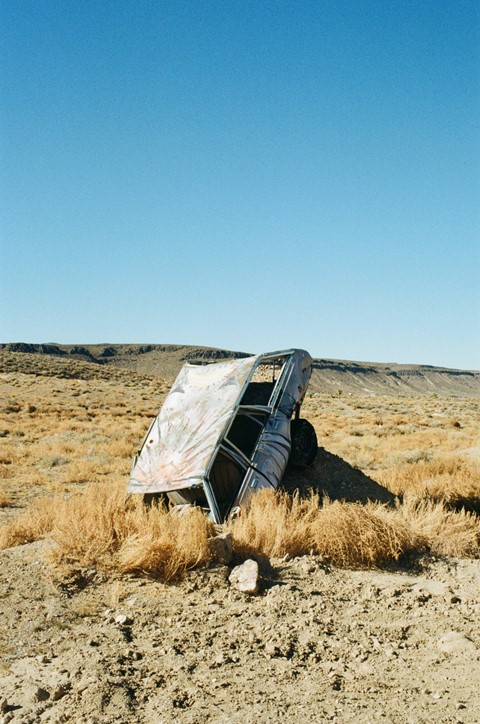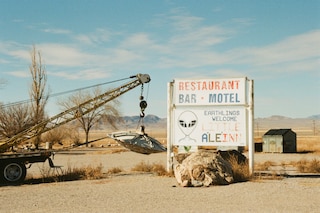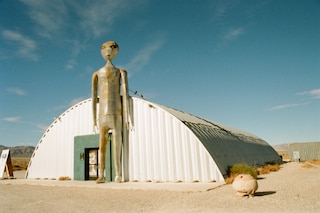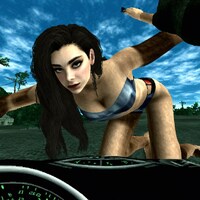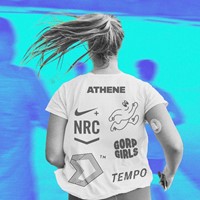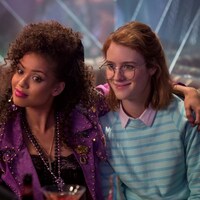‘I’ve seen some things I can’t explain’: A road trip along the Free-Range Art Highway takes a left turn into alien country
It’s five degrees below freezing, a full moon, and Orion is rising over the dusty hills outside Tonopah. Russ Gartz, a local photographer and astronomer, has just given me a tour of the lunar surface and Jupiter with his several-thousand-dollar telescope, and now we’re hoping to catch a glimpse of the Orion Nebula, AKA M42, a shimmering cloud of gas and dust where stars and planetary systems are forming in real-time. As we wait, the quiet of the Nevada desert is a welcome break. Beginning in Las Vegas, the last few days have taken me through ghost towns, UFO hotspots, remote land art installations, and an infamous clown motel. There are still a few hundred miles to go before the final destination, Reno, a city bordering California in the state’s mountainous north-west.
Travel Nevada’s Free-Range Art Highway is a trail (closely following US-95) that stretches some 500 miles between Sin City and the ‘Biggest Little City in the World’, home to a bustling local arts scene and the Nevada Museum of Art. At the first stop, just 20 miles south of the Las Vegas Strip, the stage is set by Seven Magic Mountains (2016), a momentous art installation by Ugo Rondinone that places towering stacks of Day-Glo-painted boulders against a backdrop of rolling hills, cloudless skies, and distant dust devils. “[It] is an artwork of thresholds and crossings,” reads a quote from Rondinone, evoking: “the contrary air between the desert and the city lights.” The sign also bears warnings about venomous snakes and endangered desert tortoises. All in all, it feels like an appropriate place to start.
Looping back through Vegas, it’s a couple of hours drive to Beatty (known as the ‘Gateway to Death Valley’ – Nevada doesn’t pull any punches with its nicknames). Close by is Rhyolite, a ghost town littered with Gold Rush ruins, including a mostly intact railway depot-turned-casino-turned-rumoured-brothel, which is now inhabited by a pack of feral kittens. If you’re following the Art Highway, though, you’re most likely there for the neighbouring Goldwell Open Air Museum. Back in 1984, the first work of art on the site – a row of ghostly plaster figures titled The Last Supper – was installed by the Belgian artist Albert Szukalski. Originally intended to endure just two years in the Mojave, the spooky and spiritual installation still stands today, and several other artworks have joined it, including 1992’s Lady Desert: the Venus of Nevada (a pink, kneeling nude that looks like it’s lifted straight out of a NSFW Minecraft server) and a large-scale tribute to the early Death Valley miner Shorty Harris, which inexplicably includes a rogue penguin rendered in rusty steel.
What inspired this group of artists – including net.art pioneers, iconic painters from the Antwerp art scene, and a grandchild of the Eames design dynasty – to journey to Nevada and lug their materials out into the desert, all in the name of art? It’s not entirely clear, but this only adds to the absurd beauty of the whole project. See also: the International Car Forest of the Last Church on the outskirts of Esmeralda County’s Goldfield, a desert city that sits an hour north along the Free-Range Art Highway. Up a dirt track off the main road, this graveyard of vehicular husks is free and open to visitors 24/7, featuring no less than 40 cars, buses, and vans, buried nose-down in the dirt or precariously stacked on top of one another.
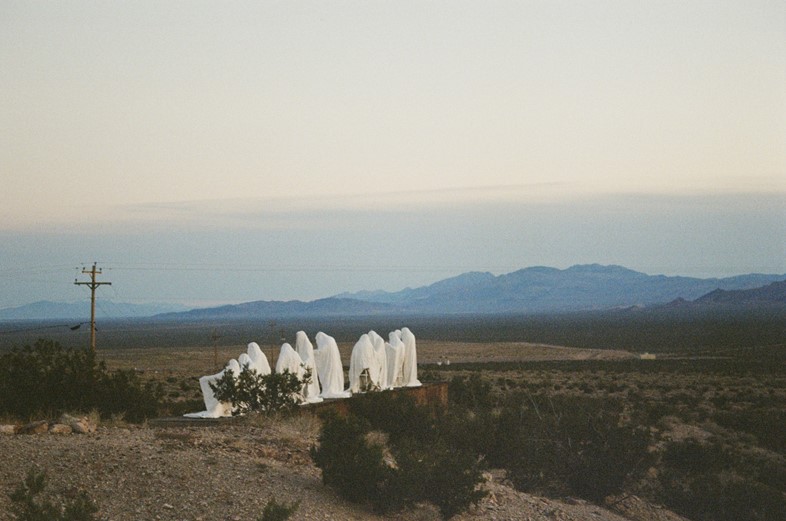
With its first vehicle “planted” by the longtime Goldfield resident Michael ‘Mark’ Rippie in 2002, the Car Forest is the largest of its kind in the country (to be fair, there’s not too much competition) and yet its presence goes mostly unexplained. An information board in the wooden shack that comprises the visitor centre explains that Rippie was “an independent thinker who spent many years in and around Goldfield doing his own thing and sometimes making his own rules” – a quick internet search reveals that his disregard for the rules led to more than a dozen run-ins with the law, including a two-year stint in federal prison. Asking around in Goldfield itself yields a few more details. A local shopkeeper tells me that Rippie recently passed away, and is now buried with his cars in an undisclosed area of the Car Forest. Is she telling the truth? Well, under Nevada law, burials on private land are allowed in counties with a population under 50,000; as of the 2020 census, Esmeralda County had a mere 729 official residents. They can pretty much do what they want, she adds. “We’re still part of the Wild West out here.”
For this reason, life in the wilds of Nevada often attracts a very specific kind of person: the kind of person who’s willing to trade a certain degree of luxury, and brave the intense weather conditions, in exchange for the freedom to “do their own thing” without any unwanted interruptions. Some use this to embark on monumental – and weirdly specific – projects like the Car Forest, or nearby Tonopah’s World Famous Clown Motel, which hosts a frankly terrifying collection of more than 5,000 clown figurines, including “haunted” dolls donated by their former unfortunate owners. Others hold fringe beliefs that might raise an eyebrow elsewhere, from the political to the supernatural.
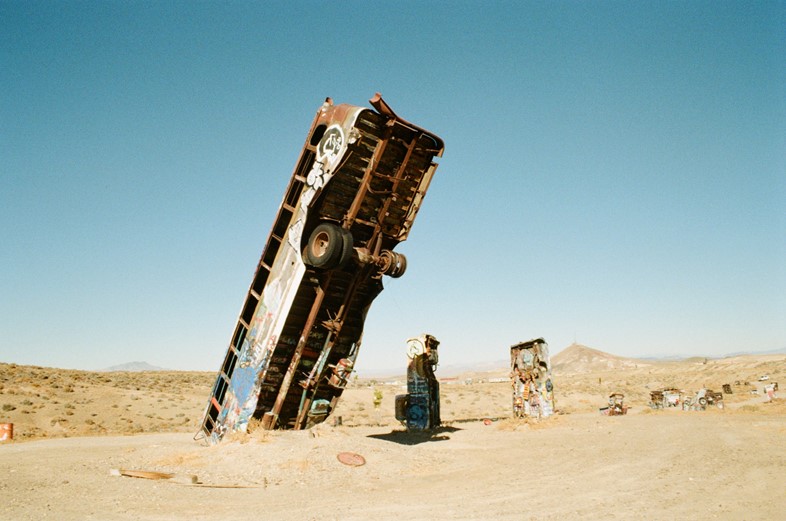
Along the Free-Range Art Highway, I encounter many such cases. At a bar in Virginia City – an old silver-mining town that’s carefully maintained its Wild West boardwalks and haunted saloons – a painter and decorator recalls an encounter he had with undercover military operatives back in the 80s. They tested a new, secret technology on his hot rod close to the gates of Area 51, he says. (He’s also had some trouble with the infamous ghosts on the upper floors of the bar, but they calmed down after a few weeks of “getting used to each other”.) Elsewhere, the stories are less specific, but there’s a notable refusal to rule out the presence of intelligent beings beyond human understanding, not least along Nevada’s Extraterrestrial Highway, which intersects the Free-Range Art Highway at Tonopah.
At the Little A’Le’Inn, a bar, motel, and gift shop in Rachel, the closest settlement to Area 51 itself, the walls are plastered with photos of alleged UFO sightings. (“Earthlings welcome,” reads the sign on the roadside, capitalising on the alien aura of the military base.) The lone member of staff doesn’t have any firsthand ET encounters to report, but says: “I’ve heard plenty of stories.” The bartender, who’s spending his day off with his dog in the desert sun, is also happy to chat, recounting the tale of how he arrived in Rachel to “check out” the Storm Area 51 event that drew hundreds of shitposters-slash-true-believers to the base’s gates in 2019. Instantly, he decided to make it his new home, because he felt a kinship with the desert community. And has he seen any UFOs, in his four-year residence? “I’ve seen some things I can’t explain,” he muses, but admits that most of it was probably military aircraft, being tested in the thousands of miles of restricted airspace that protect Area 51 from prying eyes.
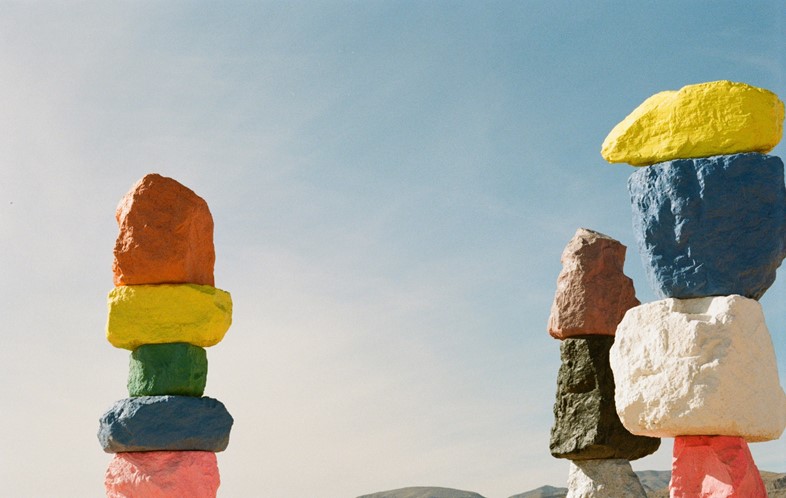
On the surface, the stops on Nevada’s Extraterrestrial Highway – from the Little A’Le’Inn to the Alien Research Center, with its two-storey silver alien statue – might not seem to have much in common with the artsy installations of the Free-Range Art Highway, but over a few days’ travelling, connections begin to emerge. For starters, both routes showcase some of the extremes of life in the state, from the excesses of Vegas, to the dark skies of Tonopah, to tiny Mojave towns where DIY signs warn motorists to slow for wild burros. These communities aren’t only united by a long stretch of tarmac, either. Throughout the journey, it feels like everyone I meet also shares an unusual sense of faith – be it in the existence of aliens, the individualistic principles of the Wild West, or the intangible power of art – that brings them together, and spurs them on to live life at these extremes.
This faith, it turns out, is kind of infectious. Back in the Tonopah Stargazing Park, the Orion nebula finally comes into view, and through Russ’s telescope the single, fuzzy ‘star’ is revealed to be a glittering star cluster, embedded in a cloud of interstellar gas some 1,500 light-years away from Earth. Looking up, it’s hard not to imagine that there’s something intelligent out there, gazing back.
